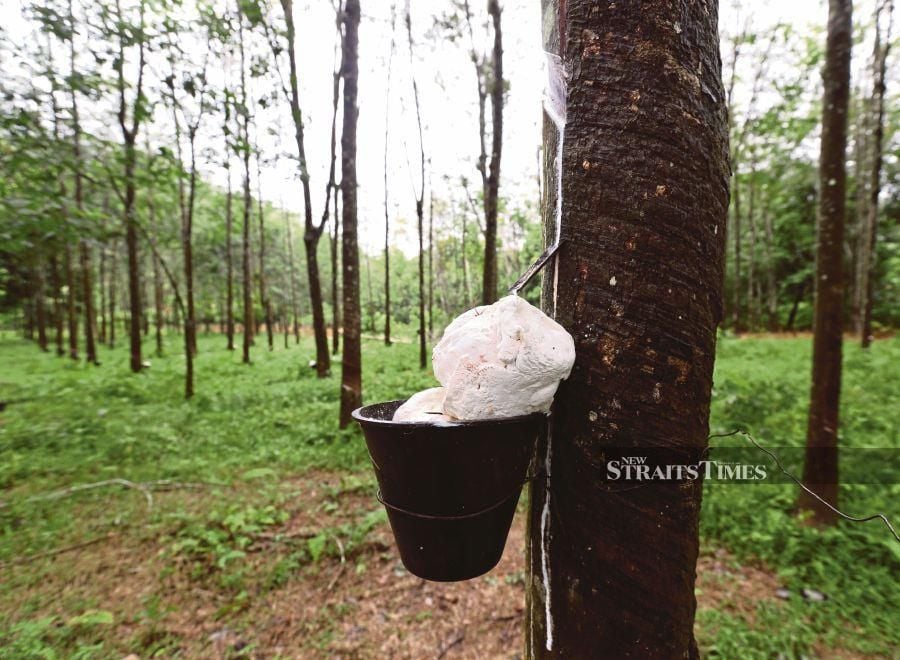THAT rubber farming is in a precarious state is no longer a secret. At the current low level of productivity, farmers can no longer stomach the low rubber price.
Signs of farmers shifting to other crops have become common place. Breeding for high yielding clones is seen as a solution to lift productivity.
The aim is to deliver high yield at low cost. Natural rubber breeding experts under the International Rubber Research and Development Board (IRRDB), recently met in Medan, Indonesia.
All the major producers, including India, China, Thailand, Indonesia, Malaysia, Philippines, Ivory Coast, and Sri Lanka' were represented in a two-day workshop where they shared their latest findings. It became evident from their deliberations that much work remains.
The long breeding cycles and a narrow genetic base remain their major challenges. There has been a commendable reduction in the time it takes from the start of research to the eventual planting recommendation. It is still not good enough.
The frantic search for new clones has grown more urgent now as the industry grapples with new debilitating rubber diseases and the changing climatic pressures. There were some encouraging inroads reported in the search for disease and drought resistant clones.
There were also reports about new findings in the more robust latex timber clones. The deployment of molecular techniques to reduce the time for selection shows some promise. But, the need to widen the genetic base faces challenges.
Their clonal exchange programme among the producer countries, which has now been running for a few years, has yet to show the expected outcome. It is unfortunate that Malaysia has been singled out as inactive in the clone exchange scheme.
All the other countries have been actively exchanging clones. The meeting agreed that it is time for another expedition to the Amazon region to look for new genetic materials.
Putting together such an expedition requires collaboration and partnership, especially in sharing the costs. The meeting further recognised the need to invest more in the molecular techniques to further reduce the breeding cycle.
In screening the germplasms available, it was suggested to also look at other traits apart from high latex yield. The presence of low molecular weight short chain elastomers should also be considered.
Even the proteins in the non-rubber serum should not be avoided in the screening. Also included in the evaluation is the timber potential of the new germplasm.
It has become clear that despite the continuing strong global demand for natural rubber, the farming of the commodity has failed to attract much interest from the big plantation business.
This may have resulted from the lack of proper economic analysis, especially of natural rubber's future potential. The persistently low rubber price has also contributed to the lack of investor interest.
Many may not appreciate the changing business situation as the issue of sustainability takes hold in the global investment dynamics. It may not be long before fossil-based synthetic rubbers become unacceptable in the world's elastomer business.
Despite many attempts to replace natural rubber with other non-Hevea source such as guayule and dandelion, none can match the economics of the Hevea. Many predict that when that happens, the price of natural rubber is destined to hit the high mark, exceeding expectations.
As the lone viable renewable elastomer for the world, experts believe the economics of natural rubber will grow more attractive as the pressures of the climate crisis take a bite on the world rubber products business.
It is time for a comprehensive scenario analysis on the economic potential of natural rubber in the coming years.
This presents a compelling case for all producers to come together, maybe ala Opec, to collaborate to effectively influence world rubber prices, ensuring better stability and reasonable margins to sustain the business.
Instead of the earlier International Natural Rubber Agreement (INRA) type stock control model, a better instrument is to collectively manage production and supply. Replanting programmes for all producer countries require strategic planning to ensure there is no supply glut.
At the same time, producers must collaborate to market the elastomer to the world. Unless such reforms are jointly embraced in the world rubber business, sustaining the industry would be next to impossible.
The writer is a Professor at the Tan Sri Omar Centre for STI Policy, UCSI University
The views expressed in this article are the author's own and do not necessarily reflect those of the New Straits Times





